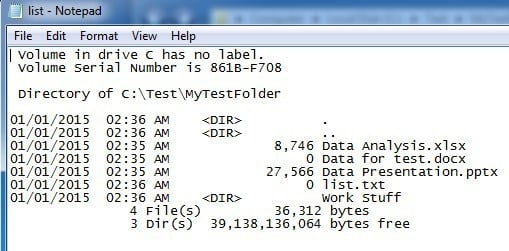


In addition, matching files found in each subdirectory are sorted alphabetically by their basenames. The file names are returned in depth-first order, meaning that files in some sub-directory are returned before the files in its parent directory. This function searches the specified directory and its sub-directories, recursively, for files whose basenames (i.e., without the leading directories) match the specified regexp, and returns a list of the absolute file names of the matching files (see absolute file names). Return all files under directory whose names match regexp. Function: directory-files-recursively directory regexp &optional include-directories predicate follow-symlinks ⇒ ( "#foo#" "#foo.el#" "." "." "dired-mods.el" "files.texi" "files.texi.~1~")Īn error is signaled if directory is not the name of a directory that can be read. If the order of processing is visible to the user, then the user will probably be happier if you do sort the names. Use this if you want the utmost possible speed and don’t care what order the files are processed in. If nosort is non- nil, directory-files does not sort the list, so you get the file names in no particular order. On case-insensitive filesystems, the regular expression matching is case-insensitive. If match-regexp is non- nil, this function returns only those file names that contain a match for that regular expression-the other file names are excluded from the list. Otherwise, it returns the names relative to the specified directory. If full-name is non- nil, the function returns the files’ absolute file names. By default, the list is in alphabetical order. This function returns a list of the names of the files in the directory directory. Function: directory-files directory &optional full-name match-regexp nosort In the latter case, it can optionally display information about each file, depending on the options passed to the ls command. Directories are a feature of the file system.Įmacs can list the names of the files in a directory as a Lisp list, or display the names in a buffer using the ls shell command. Thus, ls -lrt will give a long listing, oldest first, which is handy for seeing which files in a large directory have recently been changed.A directory is a kind of file that contains other files entered under various names.

The first column gives the type of the file ( e.g., directory or ordinary file) and the file permissions.Here is an example section of the output of ls -l :ĭrwxr-xr-x 6 eva users 1024 Jun 8 16:46 sabon ls -l gives a long listing of all files.
Windows 7 list directory contents to file full#
ls -F gives a full listing, indicating what type files are by putting a slash after directories and a star after executable files (programs you can run).ls -a will list all files including hidden files (files with names beginning with a dot).Options can be combined (this is a general principle of Unix commands) - for example "ls -la" gives a long listing of all files. There are a large number of options here are some of the most useful. "ls *.tex" lists only those files ending in ".tex". "ls" on its own lists all files in the current directory except for hidden files.


 0 kommentar(er)
0 kommentar(er)
